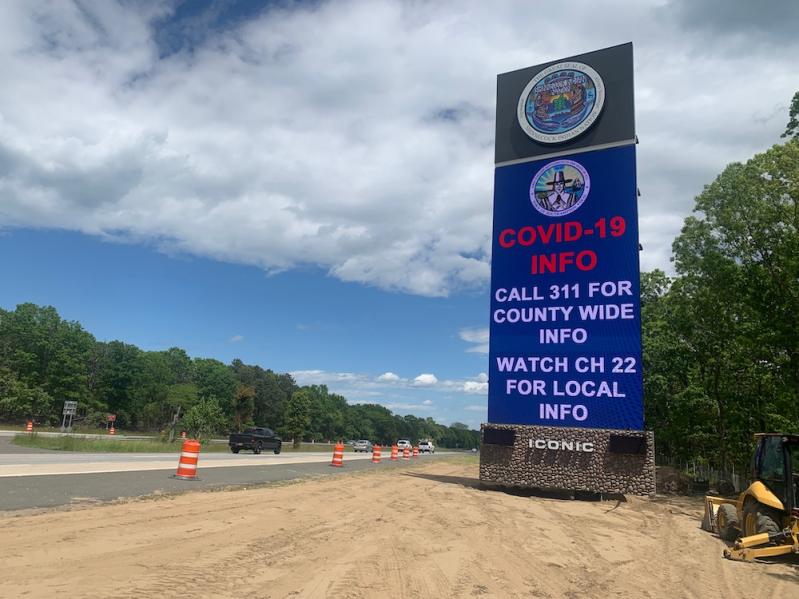New York State's effort to prevent the Shinnecock Indian Nation from operating two 60-foot-tall electronic billboards on Sunrise Highway in Hampton Bays was dealt a setback by State Supreme Court Justice Sander Neil Berland, who, in a May 18 decision, rejected the state's request for a preliminary injunction to have the signs removed.
The billboards, one of which is currently in use, went up last spring on what the Shinnecocks contend is tribal land known as Westwoods, and therefore exempt from local, county, and state regulation. The state has disputed that claim, and filed suit against the tribal officers and companies involved in constructing the signs.
To bolster its case, the state cited a 2007 federal court decision that prevented the Shinnecocks from building a casino on the property. The judge in that case ruled that the tribe's claim to the land was not "aboriginal" and that the construction and operation of a casino would be overly "disruptive" to the community.
That decision, Justice Berland noted, was ultimately struck down by the United States Court of Appeals. "It is undisputed that the Shinnecock Nation's ancestral domain encompassed essentially the entirety of what is now the Town of Southampton, and it has been established that the presence of the nation in that domain has been continuous," he wrote. "Further, the electronic signs, however eye-catching they may be . . . pose none of the disruptive consequences that the federal district court attributed to the previously proposed gaming venture."
Justice Berland denied the defendants motion to dismiss the case entirely, but his decision made it clear that he was skeptical of its merits. “Ultimately, the burden will be upon the state and town plaintiffs to refute the defendants’ contention that the nation has sovereign control over the Westwoods property,” Berland wrote. “On the current record, it is impossible to conclude that the plaintiffs will succeed in doing so.”

